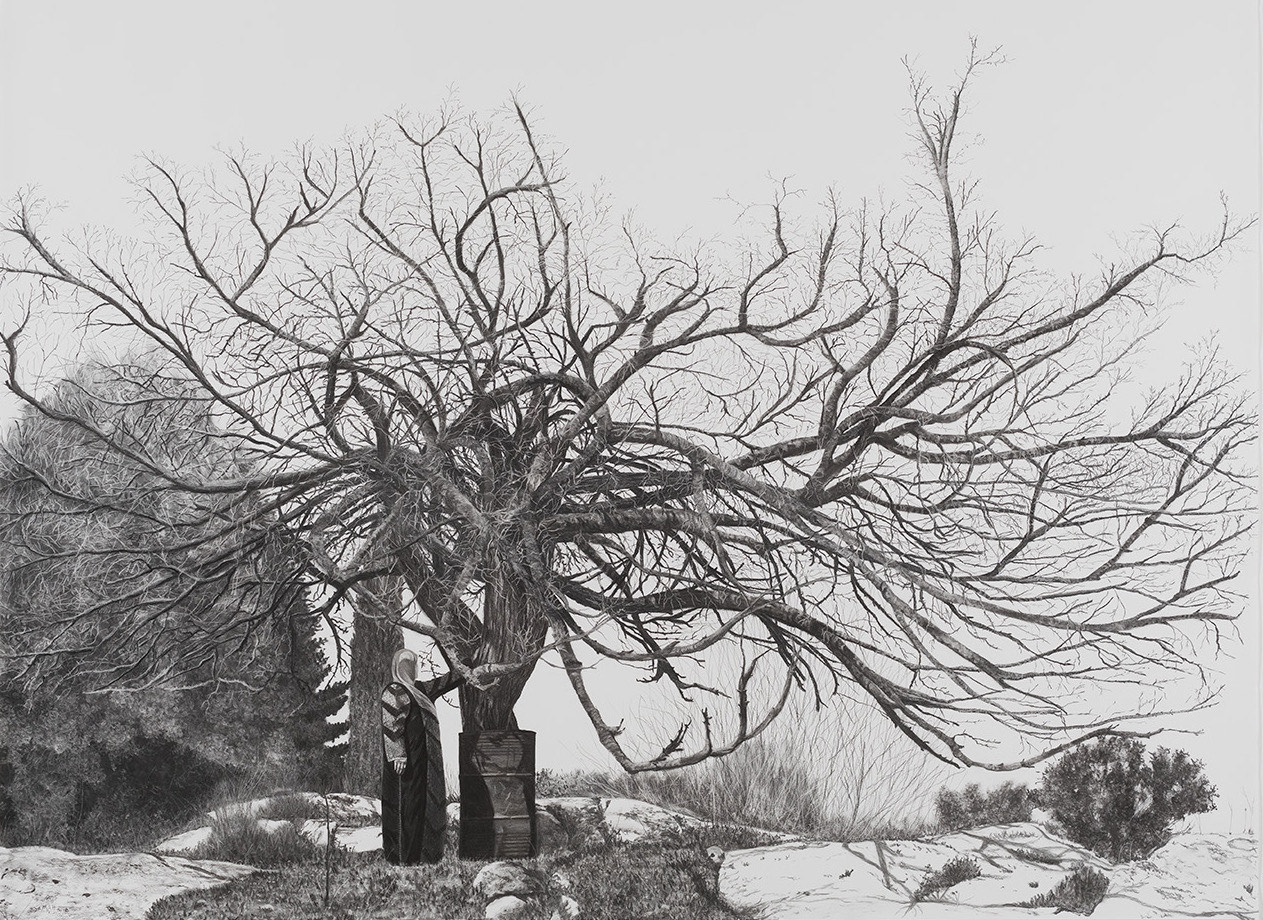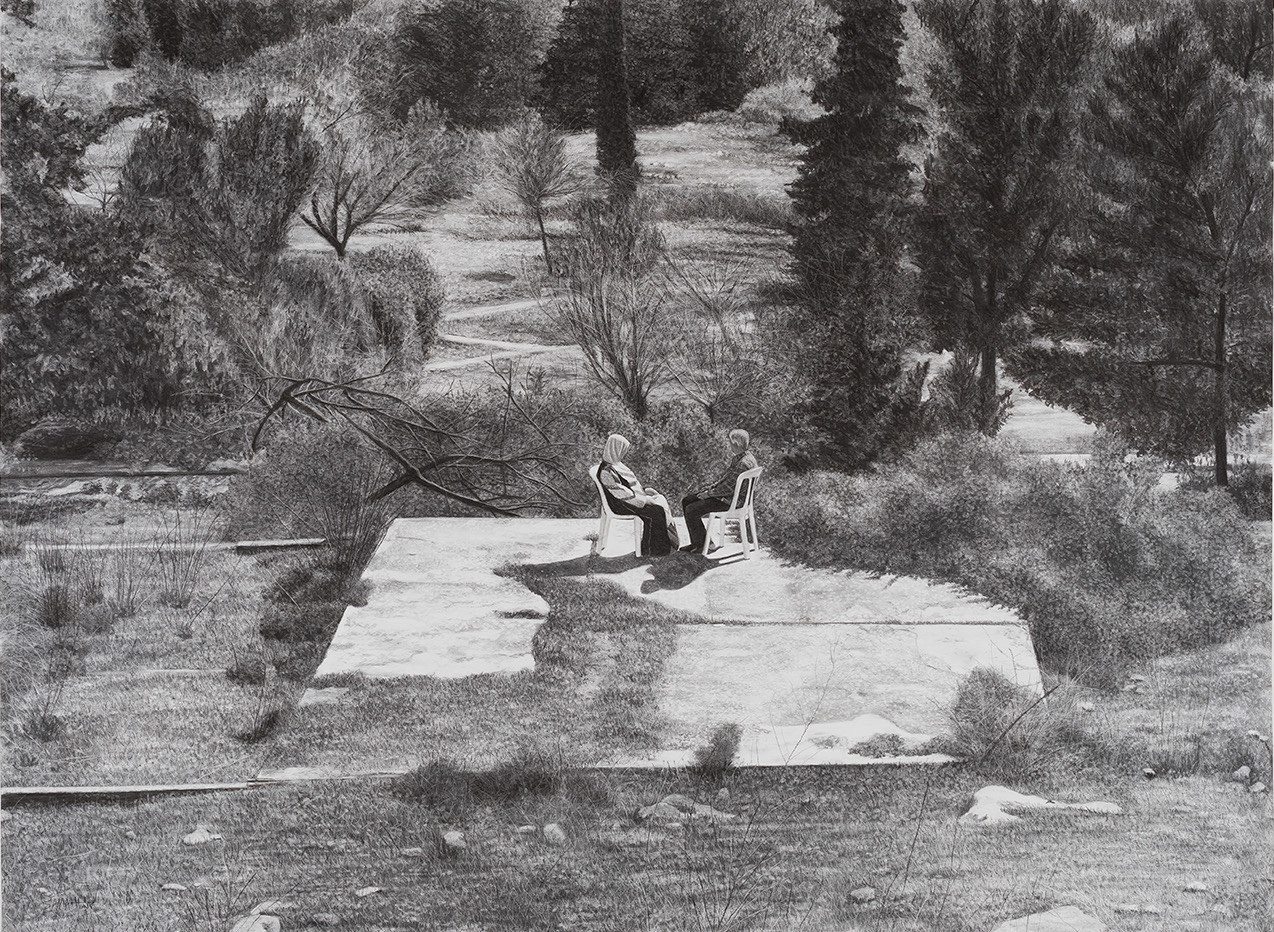-
Artists in diaspora capture the essence of identity and struggle. Palestinian hyperrealist, Samah Shihadi lives and works in Haifa Israel. She turns to her art to charter the axis of collective memory and her own lived experiences unravelling the complexities of her identity.
Through her evocative works on paper, she invites us to confront the complexities of identity, displacement, and societal constraints that she witnesses in her day-to-day life. As we engage with her work, we are reminded of the profound role that personal narratives and artistic expression play in shaping our collective understanding.
What themes can we encounter in your art?
Through my hyperrealism, I unpack a multitude of themes, including displacement, migration, women's rights, collective traditions, and memory. These themes are filtered through my unique perspective as a Palestinian based in Haifa. Moreover, my work reflects the experience of feeling uprooted and confined in a country where my Palestinian identity is not fully welcomed. Art provides me with the opportunity to transcend boundaries and express myself freely, despite the constraints imposed by physical borders and societal expectations.
What inspires your compositions?
I draw inspiration from personal experiences, my family's biography and the collective struggles of the Palestinian people. Working from photographs taken in landscapes that hold deep familiarity from my childhood, I strive to capture every detail, from the quality of light to the texture of stones. Through these vivid representations, I aim to create a sense of presence and familiarity, bridging the gap between memory and reality.

How do themes of displacement and collective memory materialise in your work?
In my artwork "Mother and Daughter" (2019), I portray my mother standing beside a mulberry tree that her grandmother planted in a barrel. This symbolic depiction represents my family's uprooting from their land and serves as a visual reconnection to my roots. "Our Home" (2018) portrays my parents amidst an abandoned forest and an uprooted tree, evoking the pain and melancholy of losing their home. This composition captures the continuity of memory, gaze, and presence, while also representing the attempt to rebuild a home through these elements. Another piece, "Untitled (Bukhje)" (2018), depicts a keffiyeh fabric bundle that encapsulates an entire world. This drawing represents the uprooting and wandering experienced by Palestinians following the traumatic events of 1948.
What compels you to create your work?
My art serves as a vehicle for sharing personal stories, particularly those belonging to my family. From exploring traditions surrounding food preparation to shedding light on women's rights, my artwork enables me to express myself, negotiate our collective past, and imagine our own destinies. The inclusion of symbols from tarot cards in my drawings signifies my fascination with the mystical and spiritual aspects of life. The mystical realm offers me a sense of escapism and an opportunity to find inner peace, reducing the impact of my challenging surroundings.
What do you want the audience to take away from your drawings?
Above all, I hope to convey to the world the importance of personal stories and the transformative power of art in shaping one's destiny and transcending societal constraints. Additionally, I aim to emphasize the significance of tradition and women's rights within the Arab world, while shedding light on the formidable challenges faced by Palestinians in their ongoing struggle for freedom and independence. Through my art, I aspire to foster understanding, empathy, and a broader perspective on these vital issues.
